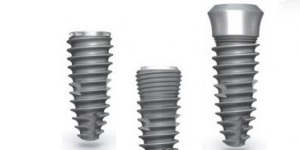
عفونت های ماگزیلاری
2015-09-12
The effect of smoking and nonsmoking on bone healing
2015-09-12As with any other surgical procedure, there are a variety of internal and external factors that cause complications or even total failure of the treatment. Dental Implants are no exception. Dental implants are designed to be a permanent replacement for a missing tooth or teeth and are a popular alternative to removable dentures or fixed bridges. They anchor artificial teeth directly into the jawbone which makes them a more functional and aesthetically pleasing restoration. That said, they are also more expensive and have longer treatment and recovery times
More than 95% are completed without incident (up to 98% if they are cared for properly). The majority of the problems that do occur are minor and easily resolved. If something does go wrong, consult your dentist or surgeon as soon as possible. A fast response enables them to take corrective actions before you or the implant is threatened by additional (more serious) problems, which is why it’s important to be aware of the possible complications. Other ways to improve the chance of success include finding an experienced dentist, planning the treatment schedule carefully beforehand and following aftercare and oral hygiene instructions to the letter
Osseointegration describes the formation of a direct functional and structural connection between a person’s bone and an artificial implant. This process takes place over the course of several months after the implant is placed. Failure of an implant is often attributed to the failure of the jawbone to fuse together properly with the implant. An implant is deemed a failure if it is mobile, falls out or shows signs of bone loss of more than 1 mm after the first year and more than 0.2 mm after the second year. Several factors can cause this to happen including incorrect positioning, insufficient bone density or volume, overloading, damage to surrounding tissues, external force/sudden impact, fractured implants or even a reaction to anesthesia. Several of these causes are described below






